- easthampton@wildlifeanimalcontrol.com
Call 24/7 for a free quote:
860-566-9704
East Hampton Wildlife Animal Control
Professional Wildlife Removal Company Servicing East Hampton, CT
If you have a problem with wildlife in your East Hampton home, your best option is to hire a company that specializes in Connecticut wildlife removal only. This is a specialty business, and regular pest control companies do not use the proper techniques to solve animal problems. I have spent many years reviewing Connecticut and East Hampton, and I recommend the following:
Wildlife Trapping Professionals
Cell Phone: 860-566-9704
NOTE: If you have a dog or cat problem, call Middlesex County Animal Services: (860) 790-0574

Wildlife Trapping Professionals specializes primarily in removing animals from attics of homes and buildings - this includes squirrels in attics, raccoons, and rats or mice in homes. Connecticut also has a documented problem with
bats in buildings, and Wildlife Trapping Professionals is specially trained in bat removal. They also perform general wildlife trapping services, such as the capture and removal of skunks or opossums on the
property. Call 860-566-9704 to discuss your critter problem and schedule a same-day or next-day appointment. Click here to learn more about what prices we charge in 2020.
When hiring a company to solve your wild animal problem, you want these features:
- Specializes in wildlife removal, not pest control
- Fully Connecticut and Middlesex County licensed and insured
- Works 7 days per week (critters don't take weekends off)
- Performs full building inspections: enters and inspects attic
- Performs exclusion repairs, with guarantee against animal re-entry
- Offers cleanup of biohazardous wildlife waste
Wildlife Trapping Professionals is a full-service East Hampton wildlife removal company. This is very different from a regular East Hampton pest control company. The pest control companies spray poison to kill insects. This is not at all
similar to wildlife removal. Wildlife Trapping Professionals performs a full inspection of the home or property, and determines why the animal(s) are there, and if inside a building, how the animals got inside. All
animals (including rodents) are trapped and removed, or if possible, removed from the building using special exclusion devices. Once the animals are gone, preventative repairs are essential, and
cleanup is sometimes recommended.
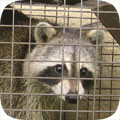 East Hampton wildlife trapping - it's not as simple as it may seem. It's illegal in Connecticut to trap without a license. Trap type is very important and there are many different types, bait is somewhat relevant, trap placement
is vital, and there are dozens of small things that are very important to know.
Safety is a concern. Then once the animal is trapped, it must be removed and dealt with in the proper manner according to Connecticut law. We offer East Hampton raccoon removal. Read more about how to get rid of raccoons.
East Hampton wildlife trapping - it's not as simple as it may seem. It's illegal in Connecticut to trap without a license. Trap type is very important and there are many different types, bait is somewhat relevant, trap placement
is vital, and there are dozens of small things that are very important to know.
Safety is a concern. Then once the animal is trapped, it must be removed and dealt with in the proper manner according to Connecticut law. We offer East Hampton raccoon removal. Read more about how to get rid of raccoons.
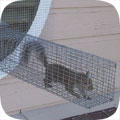 Animals in attics - this is our specialty at Wildlife Trapping Professionals. Many types of animals like to live in attics. This includes squirrels, raccoons, rats, mice, bats, birds, and even possums. Critters like to go into attics for a safe place to live
and raise their young. Removing animals from attics is very complex work, partly because of the presence of baby animals. If you need East Hampton squirrel removal, we can remove all the squirrels from your attic, and seal out any future ones. Read more about how to get rid of squirrels.
Animals in attics - this is our specialty at Wildlife Trapping Professionals. Many types of animals like to live in attics. This includes squirrels, raccoons, rats, mice, bats, birds, and even possums. Critters like to go into attics for a safe place to live
and raise their young. Removing animals from attics is very complex work, partly because of the presence of baby animals. If you need East Hampton squirrel removal, we can remove all the squirrels from your attic, and seal out any future ones. Read more about how to get rid of squirrels.
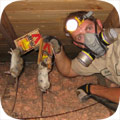 Rodent control must be done in a very specific way. First off, the most important thing is that all the openings that rats and mice can use to enter a house be sealed. Then all the rodents must be physically trapped and removed.
Never, ever use poison! Most East Hampton exterminators will just use this lazy poison technique to kill rodents, and it causes more harm than good - dead stinky rats, and it doesn't solve the problem. Call us for correct East Hampton rat removal. Read more about how to get rid of rats.
Rodent control must be done in a very specific way. First off, the most important thing is that all the openings that rats and mice can use to enter a house be sealed. Then all the rodents must be physically trapped and removed.
Never, ever use poison! Most East Hampton exterminators will just use this lazy poison technique to kill rodents, and it causes more harm than good - dead stinky rats, and it doesn't solve the problem. Call us for correct East Hampton rat removal. Read more about how to get rid of rats.
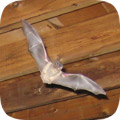 Bat removal is a highly specialized task. Connecticut is known to have colonizing bats who often live in buildings. Bats love attics. If not removed, the colony can grow to a very large size over the years. The bat droppings are often corrosive and
cause health risks. The same goes for bird droppings on or in buildings. We perform East Hampton pigeon removal and bird control. But our specialty is East Hampton bat removal. We remove 100% of the bat colony and seal the building so that it's totally bat-proof. Read more about how to get rid of bats.
Bat removal is a highly specialized task. Connecticut is known to have colonizing bats who often live in buildings. Bats love attics. If not removed, the colony can grow to a very large size over the years. The bat droppings are often corrosive and
cause health risks. The same goes for bird droppings on or in buildings. We perform East Hampton pigeon removal and bird control. But our specialty is East Hampton bat removal. We remove 100% of the bat colony and seal the building so that it's totally bat-proof. Read more about how to get rid of bats.
 If you have animals inside a house, no job is complete without proper exclusion repairs. If you simply hire a East Hampton trapper who only removes the critters, then the problem will return. You need to hire a East Hampton wildlife control company that identifies 100% of the animal entry points
into your building, and seals them shut with professional repairs. In addition, in many cases animals have left waste or contamination behind, and you'll want a company that can provide professional cleaning services. Wildlife Trapping Professionals does both.
If you have animals inside a house, no job is complete without proper exclusion repairs. If you simply hire a East Hampton trapper who only removes the critters, then the problem will return. You need to hire a East Hampton wildlife control company that identifies 100% of the animal entry points
into your building, and seals them shut with professional repairs. In addition, in many cases animals have left waste or contamination behind, and you'll want a company that can provide professional cleaning services. Wildlife Trapping Professionals does both.
The above are just some of the services offered by Wildlife Trapping Professionals. We also trap and remove animals that destroy lawns, such as moles, or digging animals. Sometimes animals like opossums will live under buildings, steal pet food, raid garbage cans, etc.
Read about how to get rid of opossums. Skunks commonly live under sheds or decks, and set up a den. We can trap and remove them without them spraying. Read about how to get rid of skunks. Wildlife Trapping Professionals
also provides dead animal removal in East Hampton. If you need help with any other wildlife conflict, from a fox, beaver, groundhog, or any other critter, we can solve it. We also do East Hampton snake removal - most of the snakes in Connecticut are not venomous, but
call us if you want safe removal, or read about how to get rid of snakes in East Hampton. And remember, we are a private business, not Middlesex County Animal Control Services, so if you have a dog or cat problem, call the County at (860) 790-0574.
Middlesex County animal services does not handle any wildlife issues.
Wildlife Trapping Professionals: 860-566-9704
East Hampton Pricing Info For Year 2020
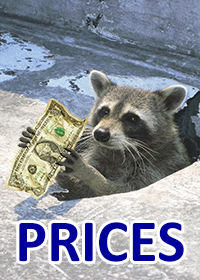 Every wildlife removal situation is different, from the species of animals involved, the location of the animal inside a house or outside, the extent of repairs or cleanup, etc. It's impossible to give one-size-fits-all prices. Examples MIGHT include:
Every wildlife removal situation is different, from the species of animals involved, the location of the animal inside a house or outside, the extent of repairs or cleanup, etc. It's impossible to give one-size-fits-all prices. Examples MIGHT include:
Small Job: For example, a one-stop job to remove an animal in the yard: $100 on up
Medium Job: For example, getting critters out of your house with minor repairs: $300 on up
Large Job: For example, a project involving many service trips and complex work: $500 on up
Give us a phone call now and tell us about your wildlife issue and we will be able to give you a price estimate over the phone. If you're cool with it, we can schedule a same-day or next-day appointment if you like. Our prices are fair, and a good value because we do the job right, the first time.
East Hampton Wildlife Tip #1:
What Should I Do With A Squirrel On Roof?
Your home could be a mess with the presence of these rodents. Squirrels are nasty and they love to occupy the roof of your home. You know that your roof is going to be infested if you start hearing chirping, scampering, bumping and chirping sounds from above the ceiling. We commonly see them roaming around in the gardens and jumping of trees but they love to stay in our homes and will find a way to settle in the roof. Squirrels love your attic because it is safe, warm and dry and a perfect place to store its food and make a nest.
You can get rid of these creatures yourself by following our guidelines; however make sure you get rid of all the squirrels as they tend to live in colonies with at least 20 squirrels.
How to remove them from the Roof
Do not panic if you see a nest of squirrels, you don't have to be a professional to capture them. There are many ways of removing them from your attic; we are mentioning some of the best ones for you to follow.
Trap and Remove
If you want a squirrel free home, you will have to trap them and relocate them. You need a cage to carry out this task, buy one from the market or you can make one at home. Squirrels are very active in the morning and the evening, they will move in and out of the house several times during the day. You need to keep an eye on its movements and locate all kits entry and exit points. You will have to block all the openings except for one and place the cage there. The squirrel will be impelled to choose the way where you have placed the cage. You need to repeat the process more than one time so that you get rid of all the squirrels.
One Way Doors
This is the most easy and humane way to get rid of squirrels from your roof. You need to mount a one-way door on the entrance hole. This is a special type of door that has a tension flap which lets the animal exit, but does not allow it to go inside. You don't have to buy many traps just make sure you seal all the holes at your home.
Lights and Sound
Keep a light and a radio on near the entry and the exit points. It will drive the squirrels crazy.
Ammonia and Repellent's
There are many sprays that are available in the market, just make sure that they have a strong smell. These sprays just irritate them but don't kill them. You can use some old rags and wet them in Ammonia and spread it near the place where the squirrels live. These rodents have a strong sense of smell and will not stand the Ammonia.
All these ways are effective to drive the squirrels away from home. Make sure they do not leave back any babies, give them some time they will take their babies away one at a time.
East Hampton Wildlife Tip #2:
Connecticut Wildlife Information:
Connecticut State bird: American robin
State mammal: Sperm whale
State fish: American shad
State insect: European mantis
Connecticut is a small state in the nation, and despite being technically on the coast of the country, it does not have an ocean border. The state is connected to the Atlantic Ocean through Long Island Sound and Block Island Sound, but has no actual sea coast of its own. The majority of the state was originally wooded, though areas of farmland have since been cleared. The forests are full of broad-leaved trees with a mixture of coniferous woodland, and there is a steady rise of terrain to the mountains in the northwest. Summers in the state are warm to hot, and winters are cold; the ocean mediates temperatures and moisture content in the atmosphere.
The state does not have a huge variety of large animals. The moose is the dominate creature on land in size, and it is the only large grazer aside from white-tailed deer. A subspecies of the white-tailed deer, called the key deer, grow to be only 3 feet tall and weigh up to 80 pounds. This subspecies is protected due to dwindling numbers. The key deer are easy targets for coyotes who roam the forested regions of the state. Black bears are also present, but the bears rarely take to hunting down large prey. Black bears spend much of their time foraging for fruits and insects, or raiding easy meal locations like birds' nests. The state has a healthy population of bobcats that keep the numbers of smaller animals manageable.
As in most states of the Northeast, Connecticut has a variety of forest-dwelling critters that hold the potential to become pest animals. Raccoons, skunks, opossums, rats, mice, bats, gophers, woodchucks, weasels, minks, and beavers are all occupants of the state. Connecticut has lemmings, small, elusive rodents that have gotten a reputation for mass suicides. These communal death marches are a misnomer; the lemming will sometimes migrate in numbers during the breeding season. Because the animals are good swimmers, they will often attempt to cross waters where a significant number of them drown. They are not throwing themselves off cliffs for no apparent reason.
Though access to the ocean is had by way of a protected region of water, Connecticut has a number of marine animals including manatees and harbor seals.
You can always call Wildlife Trapping Professionals, any time of day, at 860-566-9704, for a price quote for East Hampton wildlife control services. I am confident that this is the best choice amongst wildlife removal companies in East Hampton, CT.





































